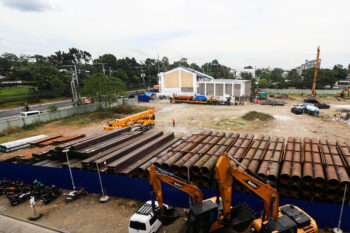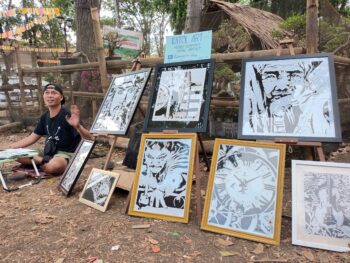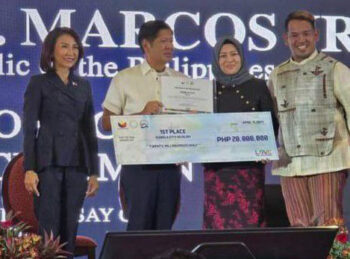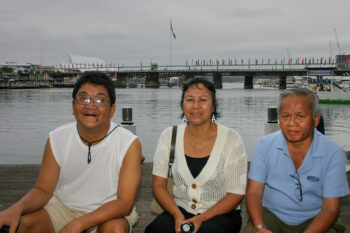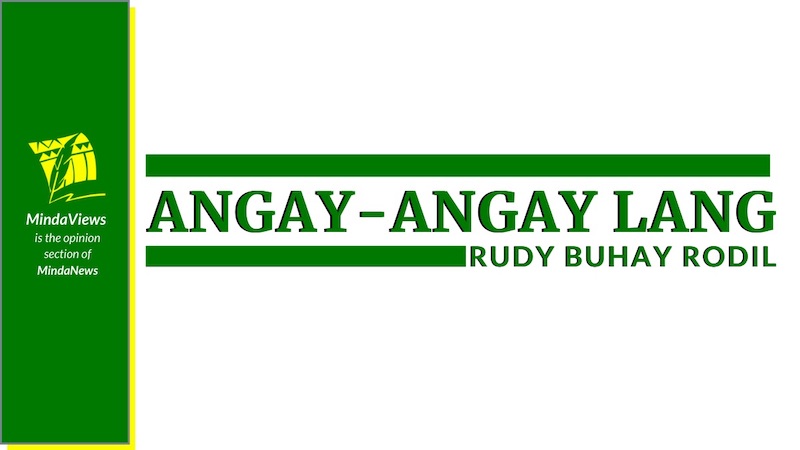
Last of 2 parts: Prospects of the Talks
By Rudy Buhay Rodil
[Paper delivered on the occasion of the Policy workshop on Peace and Growth Prospects in Mindanao, CASS Audio Visual Room, MSU-Iligan Institute of Technology, Iligan City, March 25-26, 1996, sponsored by the Department of Sociology of CASS, MSU-IIT, and the International Strategic Research Consultants. I was a Professor of History, Department of History, College of Arts and Social Sciences, MSU-Iligan Institute of Technology, and Panel Member of the GRP Peace Negotiating Panel in the GRP-MNLF Formal Peace Talks.]
ILIGAN CITY (MindaNews / 4 Nov) – The status of the talks is clearly written in the 1995 Interim Agreement. But, as we pointed out earlier, the most crucial part of the talks is whether or not the provisional government can be instituted, and whether or not both parties can agree on the integration of the MNLF forces with the Armed Forces of the Philippines, and, finally, whether or not an accord can be reached on the creation of the Regional Security Force.
Inquiring about the prospects of the talks at this point is also asking how much further both parties can move forward from the present point because the remaining items have the potential of the ninth ball in a nine-ball billiards, except that all players are bound to be the losers. They are that decisive in the entire framework of the implementation of the Tripoli Agreement.
Much depends, at this point, on how strongly each party desires peace and settlement, and how much they are willing to compromise in their respective positions. What the Third Round of formal Talks has accomplished is to get both parties to lay their cards on the table. But it must be stressed that bringing the two positions closer is a real difficulty.
Just to give us an appreciation of the degree of difficulty, let us do a quick look over the positions of both sides. The issue is how to put in place the transitional implementing structure and mechanism, the second item in the agenda agreed upon in Cipanas? Or how to implement the provisional government as explicated in Par. 15 of the Tripoli Agreement, which follows:
“Immediately after the signature of the Agreement in Manila, a Provisional Government shall be established in the areas of the autonomy to be appointed by the President of the Philippines; and be charged with the task of preparing for the elections of the Legislative Assembly in the territories of the Autonomy; and administer the areas in accordance with the provisions of this agreement until a Government is formed by the elected Legislative Assembly.”
The MNLF has consistently held on to its stand that it should be by appointment by the President of the Republic and without a plebiscite as stated in Par. 15 of the Tripoli Agreement. The territory is the thirteen provinces listed in the agreement.
The GRP, for its part, states that it should be through constitutional processes as provided for in Par. 16 of the Tripoli Agreement, which follows:
“The Government of the Philippines shall take all necessary constitutional processes for the implementation of the entire agreement.”
The GRP is in a legal bind here. First of all, can the President of the Republic appoint the Provisional Government? It is simply because under the 1987 Constitution, the President does not have the power to do so. Nor can Congress grant him the authority to do so. At the time of the signing of the Tripoli Agreement, President Ferdinand Marcos had legislative powers. So did President Corazon Aquino until July 1987 when the First Congress was convened under the 1987 Constitution.
Secondly, the Autonomous Region in Muslim Mindanao is in place, born out of the provisions of the 1987 Constitution. The Organic Act that governs it cannot be amended or replaced without triggering a legislative cycle which prescribes the plebiscite among the citizens of the affected political units.
And so, what then is the GRP interpretation of the “constitutional processes” in Par. 16 of the Tripoli Agreement?
All factors considered, the GRP interprets this to mean a three-step process. Step one, all the agreements of the government and the MNLF should be embodied in an enabling law to be passed by Congress, including the provisions on provisional government. Step two, this law shall be submitted in a plebiscite to the people of the 13 provinces and nine cities enumerated in the Agreement. Then, step three, only then can the provisional government be established. This new law shall replace the present Organic Act of the Autonomous Region in Muslim Mindanao (ARMM).
These steps are prescribed in the 1987 Constitution. The people in the designated area of autonomy must have a say through a plebiscite on the change of political structures.
On the joining of the MNLF forces and the establishment of the Regional Security Force. The joining has already been agreed on in principle. But how to put this in the concrete is easier said than done. There is, for one, still no agreement on the formula for determining how many MNLF forces can join the AFP and the Regional Security Force.
The seventh Mixed Committee meeting in Zamboanga City on March 1-2, 1996 was brief and not exactly comfortable. It was sometimes described as “facing the moment of truth” because all participants were aware that, at last, we have nothing else to talk about except the provisional government which we have avoided in the last two years… because it is always touchy… because it is always unsettling… because it is always disquieting… because it is always a raw nerve.
The meat of the two-day meeting was merely a summary reiteration by the GRP of its stand, already cited above, and its unhesitating rejection by the MNLF. It was all expected.
That was a clear deadlock, although temporary because both sides immediately stressed that there was no collapse in the talks, just a recess, to allow room for fresh ideas. The next meeting was tentatively set for the last week of May 1996.
But what was gained by the Seventh Mixed Committee meeting? Hard to say where each observer will have his own yardstick. But one can offer the observation that what transpired was necessary to let reality sink into consciousness, the reality that times have changed. The reality that one’s sincerity was not enough.
The reality that there are more people involved than just the GRP Panel and the MNLF. The Peace process is in itself a very concrete case of social engineering whose ramifications are not all visible, or tangible. It is the process of building up a positive relationship in the wake of a violent war. And because there are more people involved, the peace process itself must be expanded. A temporary deadlock in the GRP-MNLF talks should not mean halting the process at the level of the people.
Citizens’ Participation in Creating A Culture of Peace
Creating a culture of peace in the thirteen provinces is not a simple case of settling the implementation of the Tripoli Agreement. While it is true that the document clearly speaks of establishing “autonomy for the Muslims in Southern Philippines” in the thirteen provinces, which may also be interpreted as the recognition of the ethnicity of the Muslim population, it is equally true that the same document is silent about the other major segments of the total population in the region. And naturally, the non-Muslims find difficulty identifying with this autonomy. The GRP, for its part, must constantly be conscious of the demographic peculiarity of the area of autonomy.
The population in the region may be broadly classified into three, the Muslims, the Lumad and the Christians. From the census data, we can more or less get a feel of the kind of population situation we have in our midst.
In 1970, the total population of the region was 5,284,662. Of this, the Muslims were 1,608,758 or 30.44%, the Lumad 300,427 or 5.68%, and the balance of 63.88% was “Christian”, more or less.
This was not much different from the figures of 1990 when the total population of the region was already 9,362,797. Of this, the Muslim population had a total 2,517,192 or 26.89%; the Lumad had 549,847 or 5.87%; another category labelled merely as “Others” which refers to unidentified indigenous population was composed of 585,790 or 6.26%. The “Christian” population constitute the balance of 60.98%, more or less.
This population reality has a direct bearing on the implementation of the Tripoli Agreement, especially on the willingness of both the GRP and MNLF to have or not to have a plebiscite. It will also have a direct impact on the matter of the MNLF forces’ joining the AFP as a unit.
It is equally important to bear in mind that the various Lumad tribes, all twelve ethnolinguistic groups of them within the 13 provinces, have since the mid-1980s started to articulate their own right to self-determination within their ancestral domain. The Christian population, most of whom are third or fourth generation descendants of immigrants from Luzon and the Visayas but a large number are themselves indigenous, acknowledge themselves as genuine Mindanawons and also distinct from the others, and to this extent may also be deemed to possess a certain level of “ethnicity”.
We have thus a situation where diversity of ethnicity is a given, and yet only one, the Muslims, saw the need to assert themselves as Bangsamoro and have succeeded in getting a Tripoli Agreement. On the other hand, the non-Muslims cannot quite naturally identify themselves with it. This is a situation that is almost not possible to balance between the government and the MNLF, even with the participation of the OIC.
The people must take part in identifying what is common among them and working out a modus vivendi from there. And this is not something that can be the subject of negotiation between the GRP and the MNLF. And yet this cannot but be part of the broad peace process. Perhaps, this is one moment in history when we must grapple with realities in a manner radically different from the way the colonizers did it for us. If we must unite, we must do so as distinct entities; we must do so as equals accepting and respecting each other’s unique identity and dignity – regardless of population size, and we must do so because unity in diversity is mutually beneficial and best for all concerned.
This is an important first step in the creation of a culture of peace. Balanced with one another, ethnicity can be an instrument for sustaining a peace culture – which, in turn, is a vital component for the development, not only of the autonomous region but also of Mindanao and the Philippines.
Implications to Development
What is development in Mindanao? It means different things to different people. Let me define how I understand it myself.
On the level of the people, it is creating a stream of unifying ideal among a diverse population whose basic interests may sometimes be conflicting. It is molding a common agenda and a common vision; it is creating unity out of diversity. It is seeing ourselves as integral parts of an organic whole.
Following the idea of an organic whole, the same people will do well to see themselves as one with nature and the physical environment in which they live. Then from there, find the interlinks, or the unifying thread among the various forces of nature.
With a closer look, one can easily see the interactive roles of the various resources or forces of development in Mindanao in the overall forward movement of the region and the country.
To focus on industrialization as a case in point. One may say, but industrialization is possible only with a continuous flow of electrical energy. Electricity comes largely from the hydroelectric plants along the Agus River hydroelectric plants, seven of them, for a total of 944 megawatts. The six dams along the Pulangi river will produce a total of 1,003 megawatts and service irrigations systems. Other smaller projects will have a combined capacity of 714 megawatts. The 22 sites, excluding the geothermal plants, in Mindanao are expected to produce a total of 3,006 megawatts.
From the sources of energy to the distribution of electricity, we can feel a very intimate interconnection between the peace process and the economic development. Water, the source of power that turns the giant generators, are dependent on the integrity of the watersheds. And keeping watersheds alive require the nurturing care of people, people who share a common desire to keep the water flowing for the common welfare. The most vital watersheds are located in Moroland. Maintaining the watersheds will mean not only preserving the water resources in all lakes and major river systems, it will also mean a sustained supply of water for agriculture, another very strong component of Mindanao economic development. The best illustration of the latter is the potential of the Cotabato river basin. Sustained effort from a diverse population will only be possible if the same is unified by a common dream.
What this all boils down to is that peace in Moroland is as vital a component as a requirement for the restoration and preservation of the watershed areas that will, in turn, assure us of the continuous flow of electricity. And this for its part will fuel the industries. And the cycle can continue ad infinitum.
The cycle we have presented here may not be complete but the concept of the organic whole approach to development seems worth exploring.
[Si Prof. Rudy Buhay Rodil ay aktibong historyan ng Mindanao, tagapasulong ng kalinaw (Bisaya sa kapayapaan). Kilala siyang espesyalista sa paghusay ng mga gusot sa Mindanao-Sulu. Naging Komisyoner noon ng Regional Consultative Commision sa siyang nagbuo ng draft organic law ng Autonomous Region in Muslim Mindanao noong 1988. Dalawang beses siyang naging miyembro ng GRP Peace Negotiating Panel. 1993-1996, pakikipag-usap sa Moro National Liberation (MNLF), at noong 2004-2008 sa pakikipag-negosasyon sa Moro Islamic Liberation Front (MILF). Naging visiting propesor sa Hiroshima University, Oktubre-Disyembre 2011. Nagretiro noong Oktubre 2007.]

